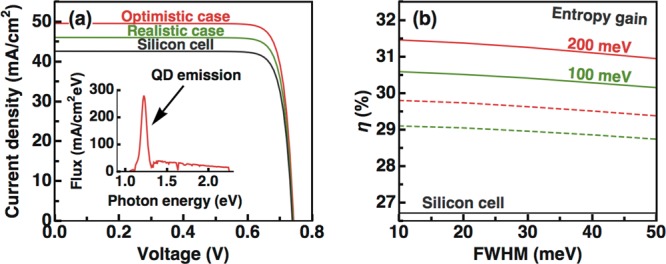Figure 2.

(a) Current–voltage characteristics of the modeled singlet fission photon multiplier on the silicon base cell with an efficiency of 26.7% for the optimistic case and the realistic case. The inset shows the modulated photon flux incident on the silicon base cell filtered by its external quantum efficiency. (b) Efficiency of the singlet fission photon multiplier as a function of full width at half-maximum (fwhm) for the quantum dot emission using a silicon base cell with an efficiency of 26.7%. The solid (dashed) lines assume 3% (5%) parasitic absorption losses below the singlet fission band gap and capture losses of 5% (15%). The black solid line indicates the efficiency of the silicon solar cell.
